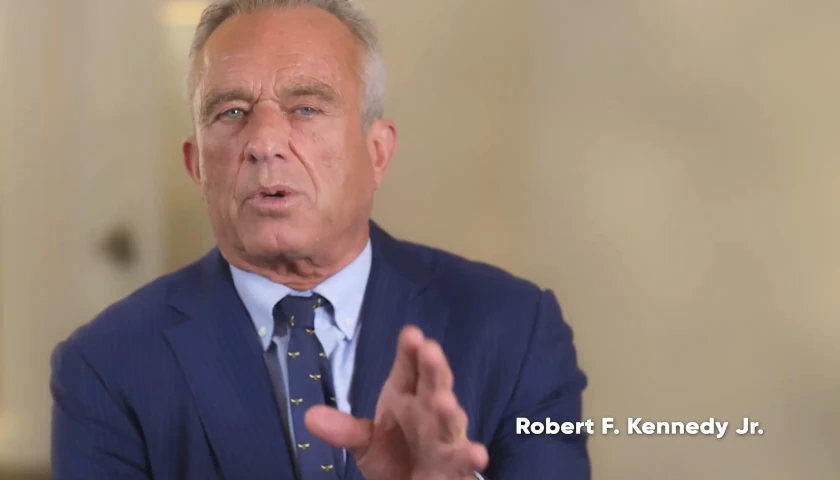Democrats in the Pennsylvania General Assembly hope to increase monthly welfare benefits in Pennsylvania, reasoning that payments under the federally funded Temporary Assistance to Needy Families (TANF) program have stayed flat since the 1990s, falling well behind inflation.
Legislation being drafted by State Sen. Katie Muth (D-PA-Royersford) and State Rep. Malcolm Kenyatta (D-PA-Philadelphia) would increase Pennsylvania’s TANF benefits, which average $403 per month for a family of three in most counties. That amount covered 43 percent of the federal poverty level in 1990 and only covered 22 percent of the federal poverty level last year, according to a memorandum Muth sent to Senate colleagues seeking cosponsors. She and Kenyatta would hike the benefits to cover over half of the federal poverty level.
Muth and Kenyatta’s effort — a long shot in the GOP-led legislature — comes in the wake of a joint report from the Black Women’s Policy Agenda, Community Legal Services of Philadelphia, the Pennsylvania Health Access Network, and Just Harvest arguing that TANF is leaving many poor Pennsylvania families’ needs unmet. The nonprofits cite data from the Pennsylvania Department of Human Services and the U.S. Census Bureau indicating that the official number of Pennsylvania children living in “extreme poverty” is above 200,000, though fewer than 65,000 state residents receive TANF benefits.
“The way the program operates means that Pennsylvania’s state government accepts that children who receive TANF will grow up in deep poverty, living on just a fraction of what we know is needed to get by,” reads the report, titled “Meet the Need: No Child Should Live in Deep Poverty.”
Some welfare experts see a major problem with this argument: It disregards a plethora of other programs that, when combined, more than cover the poverty level for many officially low-income families. These programs include Supplemental Security Income, Medicaid, the Children’s Health Insurance Program, the Earned Income Tax Credit, the Child Tax Credit, SNAP (i.e., food stamps), the Women Infants and Children feeding program, school nutrition, summer feeding programs, Section 8 housing vouchers, and public housing, just to name a few.
“You cannot analyze the welfare state one program at a time,” Robert Rector, a senior research fellow at the D.C.-based Heritage Foundation, told The Star News Network. “The advocates for the massive welfare state will take one of those programs and say, Oh, look, this is inadequate. But there is in fact no individual who gets just one of those programs.”
Just before COVID, national expenditures on these programs amounted to about $1.1 trillion annually, Rector said. (That excludes Social Security and Medicare spending.) Pennsylvania’s annual budget for its Department of Human Services, which largely distributes welfare programs, totals over $45 billion.
Accurately calculating the full amount beneficiaries of government aid truly receive would, Rector added, reduce by about 65 percent the population of America classified by the Census as “poor,” which was 34 million in 2019.
Rector also mentioned evidence that nearly 40 percent of all earnings made by low-income households go unreported. On average, he said, when all earnings, cash benefits, and in-kind benefits are taken into account, a family identified as poor has about $55,000 in annual economic resources. That’s in contrast to a mean of about $14,000 in income that the government officially ascribes to such a family.
Rector’s research significantly influenced Congress’s restructuring of the welfare system in 1996, creating the TANF block-grant program and replacing the preexisting Aid to Families with Dependent Children (AFDC). Reformers wanted a program that would more effectively move recipients off of the cash-assistance system and into the workforce. Their legislation’s enactment was relatively bipartisan: 15 percent of Democrats in the U.S. House of Representatives and half of Democrats in the Senate voted for the measure, which had the support of nearly all Republicans. President Bill Clinton, a Democrat, signed the legislation.
Rector is mostly pleased with the way the reform worked out. Before it became law, about one in seven American children were recipients of AFDC and the average beneficiary spent about 14 years on the program. Work requirements and other adjustments led to much greater workforce participation in the decades since.
Elizabeth Stelle, director of policy analysis at the Harrisburg-based Commonwealth Foundation, concurs that Pennsylvania residents should be happy with the success of the 1996 reform and points to the work requirements as the main reason for that success. She is concerned that liberal legislators in the Keystone State, by merely attempting to augment cash assistance, ignore the urgency of moving welfare recipients toward self-sufficiency.
“TANF shows that when you link aid and work, people have a permanent pathway out of poverty,” she said.
Both Stelle and Rector suggested that legislators can accomplish more for poor Americans’ well-being by applying work requirements to other aid programs, thereby accentuating the incentive that able-bodied, working-age recipients have to earn solid, family-sustaining livelihoods.
Neither Muth nor Kenyatta could be reached for comment.
– – –
Bradley Vasoli is a reporter at The Tennessee Star and The Star News Network. Follow Brad on Twitter at @BVasoli. Email tips to [email protected].









